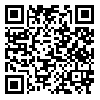BibTeX | RIS | EndNote | Medlars | ProCite | Reference Manager | RefWorks
Send citation to:
URL: http://jhr.ssu.ac.ir/article-1-272-en.html

 , Sara Jamshidi
, Sara Jamshidi 
 , Zahra Derakhshan
, Zahra Derakhshan 
 , Abdolmajid Gholizadeh
, Abdolmajid Gholizadeh 
 , Hosein Karimi
, Hosein Karimi 
 , Shabnam Amanalikhani
, Shabnam Amanalikhani 
 , Seyed Yaser Hashemi
, Seyed Yaser Hashemi 

Introduction: The aim of this study was to spatial analysis of PM10 concentrations in the ambient air of Yazd in two seasons, and the zoning by using Kriging interpolation method. Finally, different factors affecting the concentrations of PM10 are marked and standards have been investigated
Material and methods: The measurement of PM10 particulates was performed by the monitoring device HAZ-DUST EPAM 5000. 13 sampling stations were identified in various areas of the city in order to take samples of particulate matter PM10 in winter and spring 2013. Eventually Arc GIS software and kriging interpolation method and spatial autocorrelation were used to PM10 spatial distribution.
Results: The seasonal spring average for PM10 (155μg/m3) was more than winter (27.87μg/m3). At 11 stations from 13 stations PM10 concentrations were higher than the WHO standards in winter. Seasonal average of PM10 concentrations in spring were exceeding of WHO standards in all stations. Particulate matter levels were higher in High-traffic and old areas than the other regions. RMSE index was 45.493 and 56.525 for winter and spring, respectively.
Conclusion: PM10 concentration had the random spatial pattern in two seasons. This study revealed traffic and historical places affecting the concentration of PM10.
Received: 2015/11/28 | Accepted: 2016/03/14 | Published: 2016/03/14
| Rights and permissions | |
 |
This work is licensed under a Creative Commons Attribution 4.0 International License. |



